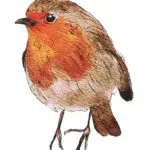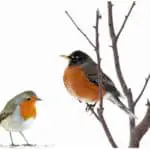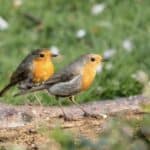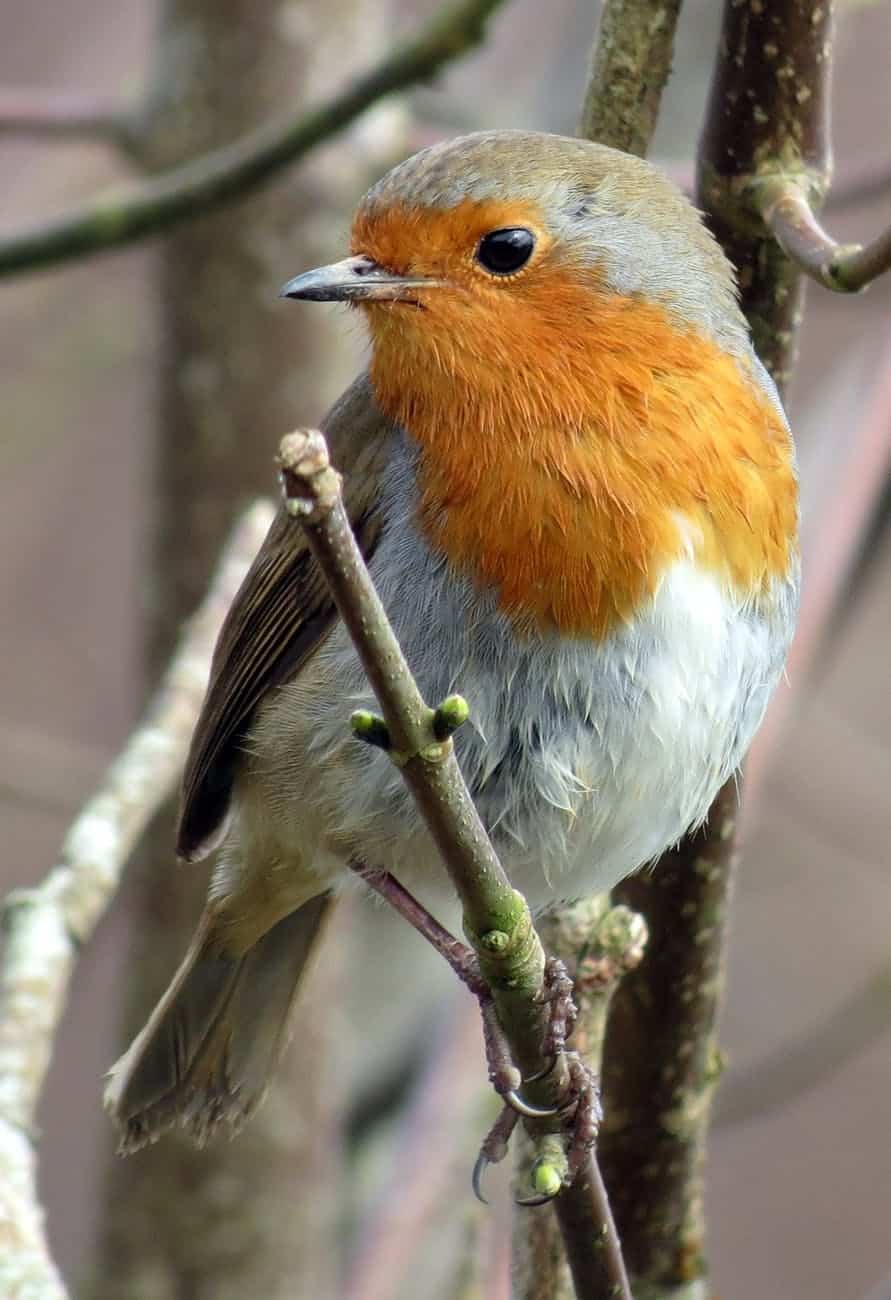Robins are a type of bird that many people associate with the winter season. After all, when fall arrives and the leaves start to change colour, many people assume that European robins have migrated south for the winter. But where do these birds actually go when cold weather hits?
Do Any European Robins Leave Europe?
No, European robins do not typically leave Europe during winter. These birds can find enough food to survive throughout the winter months. This means that they don’t need to migrate to find food.
In fact, they tend to stay in the same general area throughout the year. So if you see a European robin in your backyard in December, chances are good that it will still be there come March.
There are a few exceptions to this rule, however. If food becomes scarce in an area or if the weather turns particularly cold, European robins may migrate short distances to find a more hospitable environment. Additionally, juvenile robins may disperse from their birthplace once they reach adulthood.
But for the most part, European robins stick close to home during the winter months.
Where Do Most Robins Spend the Winter Season
As mentioned previously, European robins don’t migrate very far when winter arrives. This means that you’re likely to see these birds in the same general area where you saw them during the rest of the year.
One place where you might find European robins during winter is in your garden. These birds will often visit gardens in search of food. If you have a bird feeder in your garden, you might also attract European robins to your yard.
Another place where you might find robins during winter is in parks and open spaces. These birds will often congregate in these areas in search of food. You might also see them in forests and woodlands during winter.
If you live in an area where robins are common, you’re likely to see these birds throughout the winter months. However, if you don’t live in an area where these birds are common, you might not see them at all during the winter season.
The Secret Behind Their Survival
European robins are also able to survive winter because they have a thick layer of feathers that helps to insulate their bodies. This helps to keep them warm in winter weather, and their beaks are specially adapted to help them find food when the ground is covered in snow. In fact, these birds are one of the few types of birds that can actually survive the coldest winters.
Additionally, robins are commonly thought to eat only worms. However, they actually prefer insects. When the ground is covered in snow for example – which happens often during wintertime across Europe – these birds can still find plenty of food on account of flycatching opportunities!
Benefits of Knowing Where Robins Go in Winter
- Knowing where robins go in the winter can also help you to attract these birds to your yard (if you so desire). If you live in an area where these birds are common, you can put out a bird feeder and provide them with food during the winter months.
- Understanding the habits of robins can also help you to appreciate these birds more. These birds are fascinating creatures, and understanding their behaviour can help you to appreciate them even more.
- Finally, knowing where robins go in winter can help you to avoid disturbing these birds during their winter hibernation. If you know where these birds roost, you can avoid disturbing them and causing them stress.
Are There Any Dangers That Robins Face During The Cold Season
There are some dangers that these birds face during the winter months. One of these is starvation.
As the temperature starts to drop in the fall, robins begin to prepare for winter by eating more. They also begin to store fat in their bodies, which they will use for energy during the cold months. However, if the weather becomes too cold or food becomes scarce, robins can starve to death.
Another danger that these birds face is freezing temperature. This can happen if a robin is caught out in the cold without adequate shelter. To avoid this, robins will often roost in large flocks during the winter. This allows them to stay warm and share body heat.
How Can You Help Robins During the Cold Season
If you would like to help European robins during the winter, there are a few things that you can do.
- One of the best ways to help these birds is to provide them with food. You can do this by putting out a bird feeder in your yard. Make sure to put out a variety of food, as robins will eat both insects and berries.
- You can also help robins by sheltering them. If you have a shed or garage, you can open the door to give these birds a place to roost.
- Finally, you can help robins by protecting their habitat. If you live in an area where these birds are common, you can take steps to ensure that their habitat is not disturbed.
By taking these steps, you can help these birds to survive the winter months. These birds are interesting creatures, and they play an important role in the ecosystem. By helping them, you can make sure that they will be around for years to come.
The Future of European Robins
These cheerful little birds are very adaptable, and they have been able to thrive in both urban and rural areas. However, European Robins are facing some challenges in the future.
One of the biggest threats to these birds is habitat loss. As development continues across Europe, natural habitats are being destroyed, leaving birds with fewer places to live.
Additionally, climate change is causing problems for birds. Rising temperatures and changes in precipitation patterns are making it difficult for these birds to find the food and water they need to survive. Robins are also at risk from predation and disease.
Thankfully, many people are working hard to protect robins and their habitats. By raising awareness about the challenges these birds face and working to conserve their habitats, we can help ensure that European Robins will continue to thrive in the future.
You May Also Like…
- 4 Possible Reasons Why Robins Sing At Night

- Why Robins Have Red Chests

- Where Do Robins Go As Night Falls

- Where Do European Robins Go In Winter

- Where Do European Robins Go In Summer

- The Difference Between European Robin & American Robin

- Do European Robins Migrate

- Do Male & Female European Robins Sing

- Where Do European Robins Live


